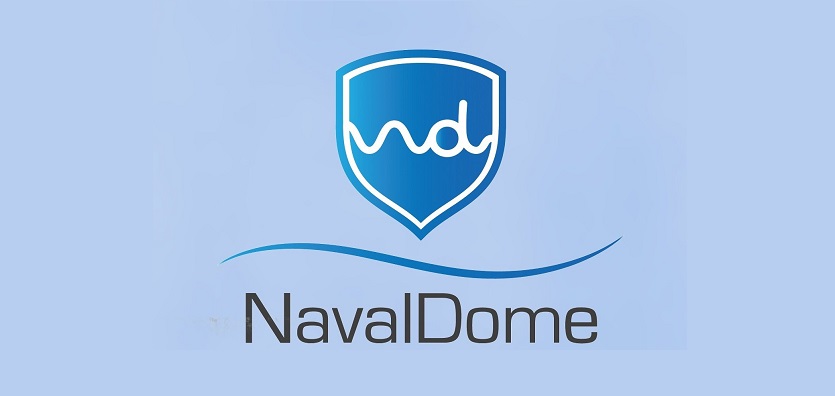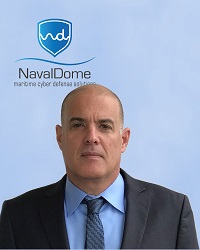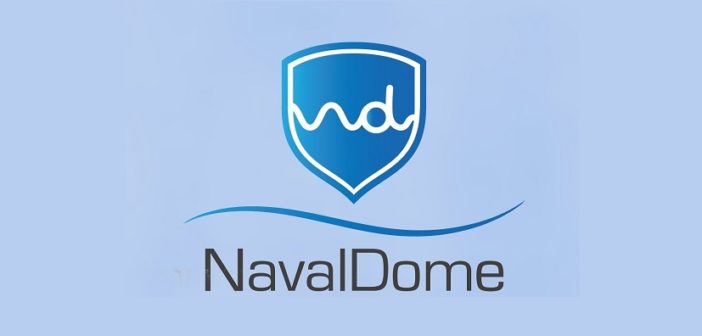
Naval Dome has adapted its award-winning maritime cyber protection technology for compatibility with port-based systems and naval vessels and rebranded its direct-installation security software to differentiate between the different types of application.
The cyber defence software will now be marketed as Marine Dome for use in commercial vessels, cruiseships and yachts; Port Dome for ports and harbours; and Navy Dome for application in naval vessel and military craft.
 Naval Dome CEO Itai Sela said: “The proven capability of our cyber security solution in protecting ships’ OT systems from unauthorised access and hacking, together with the recent SL4 type-approval from DNV GL – the classification societies’ highest level of security certification – has sparked significant interest from other sectors.
Naval Dome CEO Itai Sela said: “The proven capability of our cyber security solution in protecting ships’ OT systems from unauthorised access and hacking, together with the recent SL4 type-approval from DNV GL – the classification societies’ highest level of security certification – has sparked significant interest from other sectors.
“We have now adapted the software for compatibility with systems typically used in ports and harbours and naval vessels. While the technology is intrinsically the same, we have changed some of the algorithms to suit the different type of systems and equipment used in these areas.”
The Israel-headquartered company has also appointed Israel Defense Forces’ former Head of Naval Operations, Rear Admiral (Ret.) Ido Ben-Moshe, to facilitate the requirements of these new market sectors.

“Ido Ben-Moshe, Vice President Business Development, Naval Dome, will facilitate the cyber security requirements of the port and naval sectors”
Ido Ben-Moshe, Vice President Business Development, Naval Dome, said: “By installing Port Dome across a port’s connected machinery and OT systems or Navy Dome on the systems installed on naval vessels we remove the cyber pressure points and safeguard these important sectors against attack.”
Ben-Moshe said ports are particularly vulnerable as they become more reliant on networked connectivity.
“The increase in autonomous, connected machinery, computer integrated operating systems and terminal management systems will leave ports increasingly susceptible to a cyber-attack if they are not properly protected. It is crucial that ports’ OT systems are as impregnable and impervious to cyber-crime as the ships we protect.”
While the same concept applies to naval vessels, the approach will differ somewhat from commercial vessel application.
“A naval vessel is unique and therefore needs a unique cyber security solution to protect its connected systems,” said Ben-Moshe. “We deliver a tailor-made cyber defence solution capable of protecting weapons systems, navigation systems and machinery control systems from unauthorised access, whether they are retrofit or legacy installations.
“Using intelligence agency-grade security technology, Navy Dome blocks internal and external cyber-attacks to provide maximum protection with minimal human intervention. It integrates with existing systems and software, providing real-time cyber alerts and blocks malicious files to prevent unauthorised access to systems critical to a vessel’s ‘fight, flight or float’ capability.”
Naval Dome is currently the only provider of cyber defence solutions to the maritime industry to have achieved Security Level 4 (SL4), the highest level of certification that can be awarded under the DNV GL rules. DNV GL CP-0231 is a type approval programme developed using the international standard ISA/IEC 62443, Security for Industrial Automation and Control Systems.
Naval Dome is currently verifying Port Dome and Naval Dome applications with a number of ports and naval forces, respectively.






